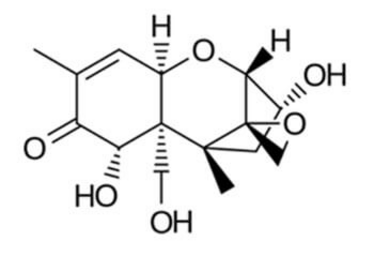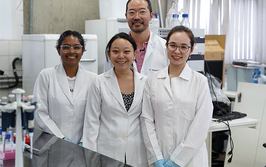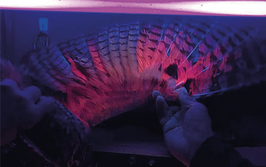Rapid Detection of Trace Levels of Deoxynivalenol in Wheat Flour by Portable Miniature Linear Ion Trap Mass Spectrometry

contributed by Bayspec |
Battery-powered mass spectrometers can detect mycotoxins in the field in real time
Brad Sohnlein, Nam Lai BaySpec, Inc.

Deoxynivalenol (Cas:51481‐10‐8), also known as DON, is a trichothecene mycotoxin that is widely found in grains such as wheat, barley, and rice. The molecular structure of DON is provided in figure 1. DON is linked to two plant pathogens: Fusarium graminearum (wheat and corn), and Fusarium ear blight (corn only). DON inhibits the synthesis of DNA / RNA as well as protein synthesis at the ribosomal level, ultimately resulting in the loss of yield and contamination of seeds. An acute dose of DON can induce vomiting (emesis) in pigs, whereas at lower concentrations in the diet, it reduces growth and feed consumption (anorexia).1 The U.S. FDA has established DON advisory levels to provide safe food and feed at concentrations of < 10 ppm to < 1 ppm depending on application.2
Log in or register to read this article in full and gain access to The Analytical Scientist’s entire content archive. It’s FREE!

















